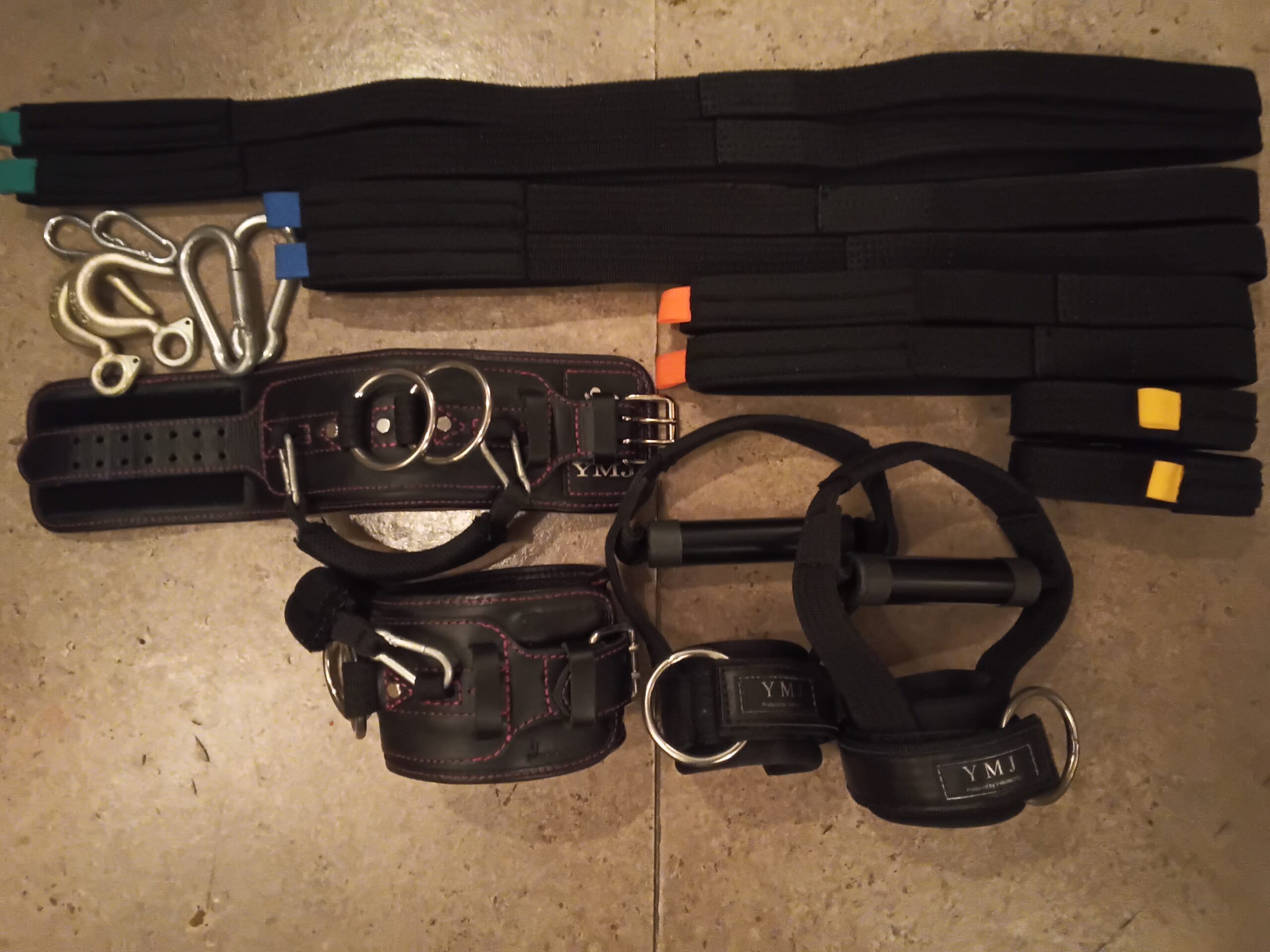This training gear was invented in 2018 by Masahiro Yamamoto, also known as Narcis, and was created by his brother, a bag craftsman with 40 years of experience, who combined his craftsmanship.
Throughout the long history of training, various gears have been introduced and used to make training more efficient.
Most of the typical gears are weight belts that cover the waist,''wrist wraps that cover grip strength,” and “power grips.”
There are only simple attachments for cables.
Many people say that the most difficult part of training is their back, and I agree.
When pulling the weights, a cloth-like strap was wrapped around the bar to cover the grip strength, making it extremely difficult to handle.
The power grip evolved and is now commonly used.
This is a very useful gear for everyone from those with weak grip strength to those with advanced grip strength, but for trainees who want to develop their back muscles, especially around the shoulder blades, just using this power grip will help them develop their muscles easily. Did you know that it is not?
The difference between those who are easy to develop and those who are difficult to develop. Also, what are the conditions?
I believe that unless at least one condition is met, children will not be able to develop as expected.
Therefore, multi-cable gear supports the clearing conditions to the maximum extent possible.
Since each person’s skeletal structure is different, the flexibility of the joints also varies.
In particular, the flexibility of the shoulder blades is involved in the development of the back.
To put it simply, people with good scapula flexibility will be able to handle the grip strength better than people with poor scapula flexibility, if we properly apply muscle contraction stimulation and muscle contraction stretching stimulation. It is easy to develop.
So, what should we do for people who have poor shoulder blade flexibility?
First, let go of the simple idea of extending your arms.
In simple terms, we would say that your shoulder blades are stiff, but if you have stiff shoulder blades and are simply stretching your arms and rounding your back as you stretch, you are not doing the right stretch. It’s not how you hang it.
If you want a simple image, imagine hanging from a horizontal bar.
This is a condition in which the load is applied downward by gravity, but if your shoulder blades are stiff, the technical term for this is “adhesions”, which means that the muscles around the shoulder blades have become stiff and stiff and have lost their flexibility. Sho.
In such a situation, unless you practice the correct stretching method, you will not be able to improve your flexibility and your back muscles will not develop as desired.
Most people have their arms fully extended when they are hanging, so if the person with fusion recognizes this as a correct stretch and stretches it, they will actually feel the shoulder blade being stretched without making the slightest movement. The only thing that’s the most stretched out is the armpit area, the border between the upper arm and the armpit.
The scapula has a muscle called teres major that supports its movement, and there is an attachment point at the bottom of the scapula that is said to be the origin of the muscle, and the scapula acts like a fan spreading out around this point. It is designed to move in a semicircular manner.
Therefore, if you are stiff, I would like you to give up the idea of stretching your arms and focus on keeping your arms bent while stretching from your elbows. However, when using developmental stimulation and loading, the arms tend to succumb to the load and stretch straight upwards, resulting in a repetition of bad stretching practices.
The ideal movement is for the upper arm to extend as little as possible, and for the upper arm to move in a semicircle from the elbow. It will take quite a while to maintain that state and get used to it!
It easily solves that role, guides ideal movements, and promotes development.
It’s a multi-cable gear.


